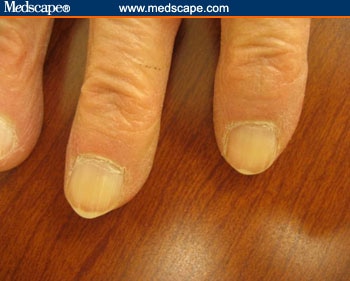


In view of its pathology and immunology, almost in equilibrium betwen the germ and the organism, the lesions of Pinta are apt to be compared with the so called latent period of syphilis in which it has been shown minimal and difuse inflamatory phenomenae at the vessels of the heart producing late sclerosis. The lesions are so minimal and even though they are in the dermis, without the pigmentary changes, it, many instances, they would pass unnoticed.
#PINTA DISEASE SKIN#
Its action is limited to the papillary portion of the skin producing atrophy and sclerosis and only after a long time. Pinta is the most benign of the three, its manifestations developed in a slow and lessen fashion without lhe production of pus ulcers and necrosis. With this points at view in mind Frambuesia and Pinta may have more ancient, theoretically their posibilities go back to the very same ecologic factors of the american tropical jungle instead syphilis requieres human concentrations that only are actives with the agricultural cultures. On the other hand Frambuesia and Pinta are rural diseases, they are transmited by insects and they do not spread to the cities but only their suburban sections. Syphilis is a urban disease it does not have a intermedial host, goes from man to man and its spreading require human concentrations. It is said that Frambuesia represent the "stone age" of syphilis, but having in mind the pathology of this three diseases, seems that Pinta is the oldest, followed by Frambuesia being Syphilis the most modem.
#PINTA DISEASE FREE#
This matter more than a epistemologic subject is one of free imagination. The idea of the three the treponemiasis coming from a common trunk has been mentioned. It is possible that one or the of this diseases may have had in those ancient days some other pathology, capable to produce hiperostosis and gummata (it has been mentioned gummata in Frambuesia and aortic and bony lesions in Pinta). The Lack of this findings otherwise characteristic of the syphilitic endemic infection opens the question the possibility of another treponemiasis non congenital and non venereal such as Frambuesia or Pinta. It has not been found as yet examples of congenital or infantile syphilis. All the examples of bone syphilis found in America correspond to adults.
#PINTA DISEASE FULL#
They pick out only the outstanding pieces of a gives skeleton disregarding the usefullnes of the remaining bones and more over the cultural data making impossible a proper study, The Museum are full of bone pieces with a limited information since the only reference is the geographical location where, in many instances, sereval cultures have developed. It is important to point out the harmful practice of the Colletionist to the medical and antropologic studies. Aside from the case N° 60455 from Pecos from William's collection consisting of atipical skull and femur, from the same person, there are no other examples of the sistemic involvement tipical of syphilis and indispensable to verfy and accurate diagnosis. Up to now it has been colleted only isolated pre-historic pieces, here and there, among the ruins of different cultures. Is spite to the chronicles about the description of "buboes" among the ancient in habitants of America as a etnological disease it has been impossible to find in the light of modern methods autentical focci of "folk syphilis" free of posible mixture with white or mestizo people, as it has been done with Pinta. That new disease, unknow in Europe, which steps in spreanding from one country to the other charaterize well known historical events and thus it was named in accordance to the geographical location of the epidemic wave (Spanish disease, French disease, Castillian disease, Portugese disease, etc. Chroniclers, contemporary to the spanish invasion of America, describe clearly and precisely the spreading on the old world, of a disease which symptoms and mode of transmission vary identical to the ones of syphilis, begining the return of Colombus expedicionaries. It was found in a closed "pre-inca" tomb and shows the intentional deformation used by its culture. 2) with characteristic lesions, contributes to fade away the suspicions about possible intrusion of post-colombian remains into pre-colombian cementeries. It has been found in precolombian cementeries, adult's bones with lesions identical to the ones produced nowadays by syphilis, The cases presented in this paper add to the other peruvian ones reported by Tella, Moodie, and Tello and Williams.


 0 kommentar(er)
0 kommentar(er)
